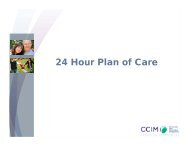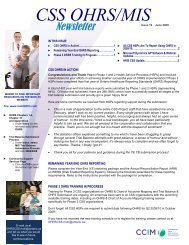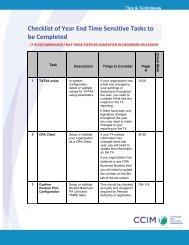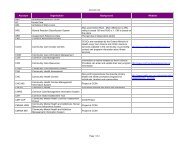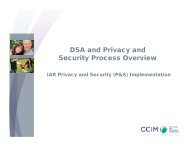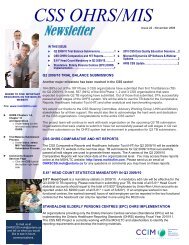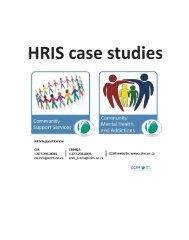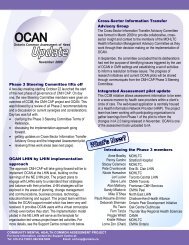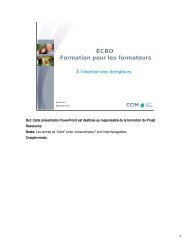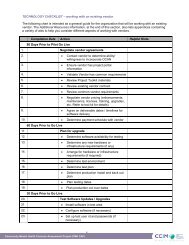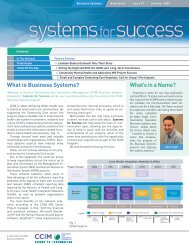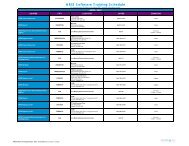RAI-MDS 2.0 Nutritional Care Resource Guide April 2011 - CCIM
RAI-MDS 2.0 Nutritional Care Resource Guide April 2011 - CCIM
RAI-MDS 2.0 Nutritional Care Resource Guide April 2011 - CCIM
- No tags were found...
You also want an ePaper? Increase the reach of your titles
YUMPU automatically turns print PDFs into web optimized ePapers that Google loves.
Selected Coding Sections of <strong>RAI</strong>-<strong>MDS</strong> <strong>2.0</strong>INTRODUCTION The most common <strong>RAI</strong>-<strong>MDS</strong> <strong>2.0</strong> section that the nutrition care team is responsible for is all or part of Section K:Oral/<strong>Nutritional</strong> StatusOther sections that the nutrition care team may be responsible for and/or contribute to are:- J1d: Insufficient Fluid- M5d: Nutrition or Hydration to Manage Skin ProblemsIndividual home’s policy will determine who completes each section of the <strong>RAI</strong>-<strong>MDS</strong> <strong>2.0</strong> assessment. It isimportant that the registered dietitian and nutrition manager are familiar with all nutrition care related codingregardless of whether they complete the coding or notThe nutrition care team is responsible for verifying coding accuracy before completing RAPs and care planningGETTING READY FOR CODING It is important to know the following for each <strong>RAI</strong>-<strong>MDS</strong> <strong>2.0</strong> assessment item:- coding intent and the assessment period (e.g. last 7 days, 14 days, 30 days)- coding choices and definition- approach/process for gathering the coding informationK1: ORAL PROBLEMSINTENT:To record any oral problems present in the last 7 days.CODING CHOICES AND DEFINITIONS:a. Chewing problem: Inability to chew food easily and without pain or difficulties, regardless of cause (e.g.resident uses ill-fitting dentures, or has a neurologically impaired chewing mechanism, or a painful tooth).b. Swallowing problem (Dysphagia): Clinical manifestations include frequent choking and coughing wheneating or drinking, holding food in mouth for prolonged periods of time, or excessive drooling.c. Mouth pain: Any pain or discomfort associated with any part of the mouth, regardless of cause.d. None of the abovePROCESS: Ask the resident/family about difficulties in the areas of chewing, swallowing and mouth pain Observe the resident during meals Inspect the mouth for abnormalities that could contribute to the above problemsREMEMBER:Continue to code chewing and swallowing problems even when compensatory strategies have been successfullyintroduced, but the resident remains unable to chew all types of foods and liquidsFor Information: 416.327.7625 2ltchrai@ontario.ca2



